Teenage Engineering EP-133 K.O. II review

Teenage Engineering EP-133 K.O. II: What is it?
In recent years, Teenage Engineering has focused on producing high-end gear with an emphasis on slick modernist design. With that focus on ‘aspirational’ products, it’s easy to forget that the Swedish brand also makes some of the most fun and wallet-friendly instruments on the market, in the form of the sub-£100 Pocket Operators.
The company’s latest, the catchily named EP-133 K.O. II, is an evolution of one of the highlights of that PO range. Like other Pocket Operators, the PO-33 K.O! sampler was a rather crude-looking digital instrument slightly larger than a credit card. What set it apart from some of the other devices in the range was its ability to quickly sample from its built-in mic or audio input, making the original K.O! a fun and convenient – if rather fiddly – tool for on-the-go sampling.
The EP-133 K.O. II is essentially an upscaled version of that device. Where the original PO was a little smaller than a phone, the K.O. II is roughly the size of a current generation iPad. That increase in size immediately solves a lot of the fiddliness that hindered the original Pocket Operators from crossing the gap to being seen as serious production tools rather than fun noise-making devices. The K.O. II hardware is more than just a bigger version of its predecessor though. This time around, the ‘open’ and bare-bones design of the original has been replaced by a more contained plastic chassis complete with extra controls and a more involved – if somewhat esoteric – display.
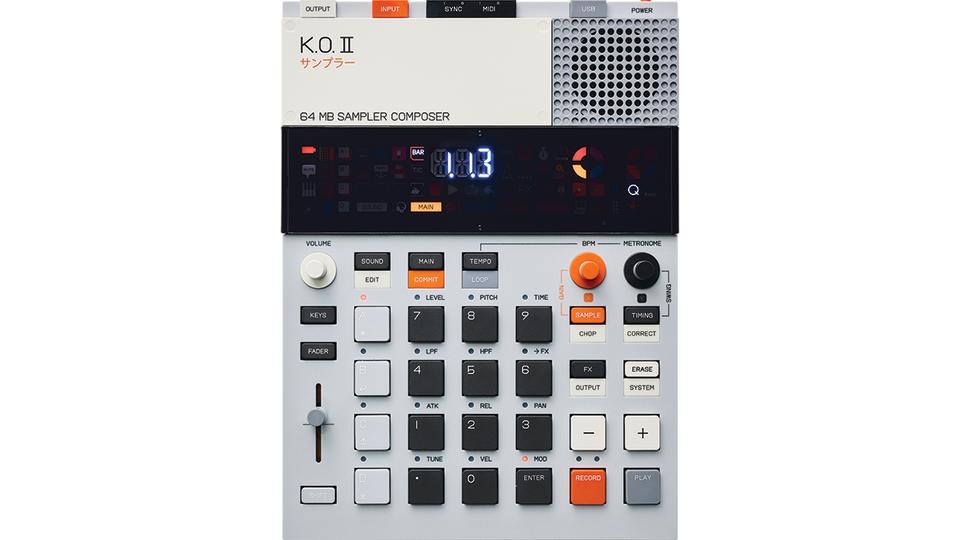
Along with the increased size comes better connectivity. At the top of the device are six mini-jack ports, the first two of which provide the main audio output and an audio input for sampling into the unit. Next to this are two analogue sync ports, and MIDI in and out ports (though a 3.5mm to MIDI adapter is required to use these, which, alas, isn’t included). Finally, the K.O. II also sports a USB-C port for USB MIDI and power as well as firmware updates and sample management.
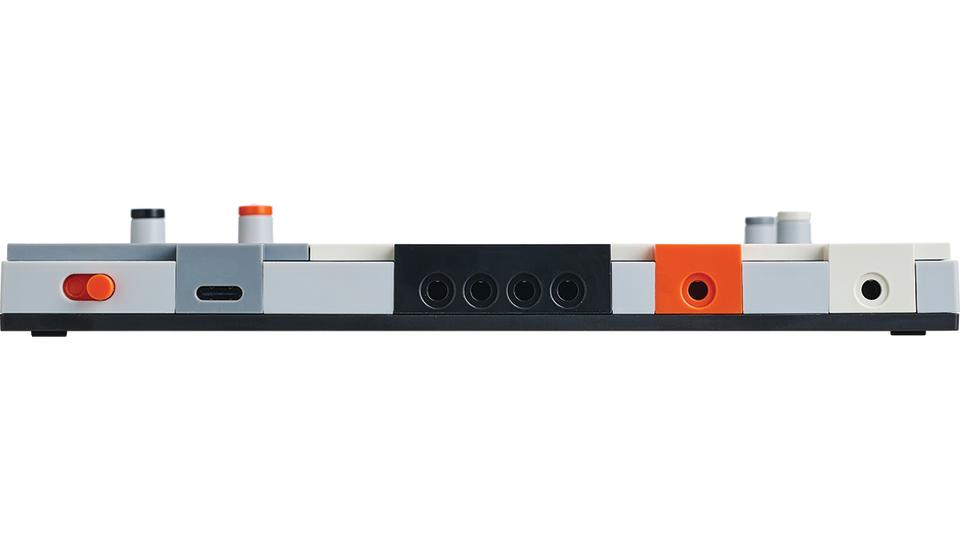
Pleasingly, despite being pitched as a more studio-friendly device, the K.O. II doesn’t sacrifice the portability of its predecessor. As with the original POs, the device can be powered via batteries – four AAs here – and keeps the built-in speaker and mic to allow for on-the-go use.
We love the look of the hardware, which has a retro-futuristic charm as if it’s been lifted from the space station in 2001 A Space Odyssey. We're also suckers for the clicky mechanical keys, which despite their vintage style are pressure sensitive and fairly robust. Less impressive is the single fader on the left-hand side of the interface, which is a little wobbly and stiff, although seeing as this is mostly used for setting parameter levels it’s not a huge issue.
On the subject of build quality, it’s worth noting that it isn’t hard to find reports online of some users experiencing issues with their units not functioning correctly or elements breaking after a short amount of use. We haven’t experienced any of this personally, and have no concerns about the quality of our review unit, although it is worth mentioning that we raised similar concerns about the production quality of TE’s DIY modular kits when we reviewed those back in 2020.
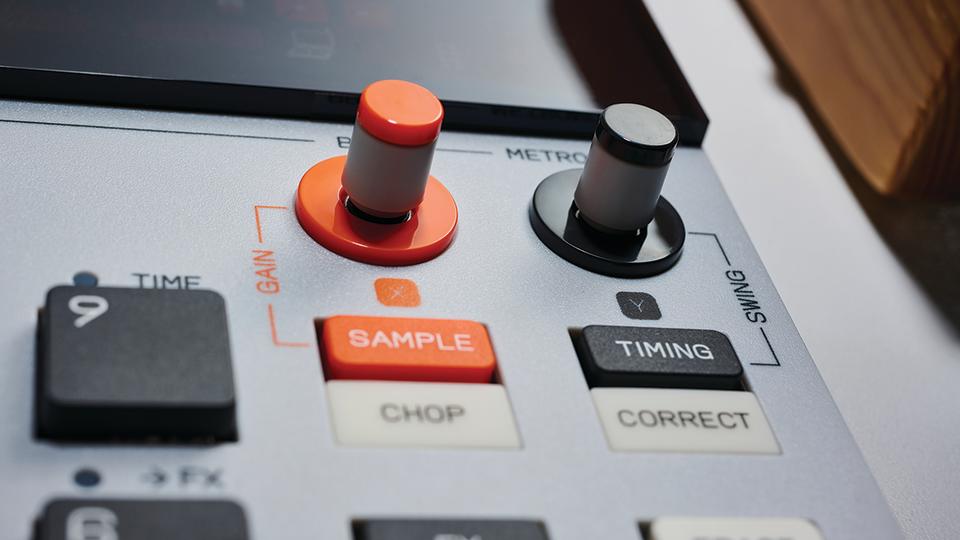
Teenage Engineering EP-133 K.O. II: Performance and verdict
In use, the K.O. II shows its Pocket Operator roots, both for better and for worse. On the plus side, Teenage Engineering has done a solid job of maintaining the fun fluidity of the POs when it comes to generating initial ideas.
Also consider...
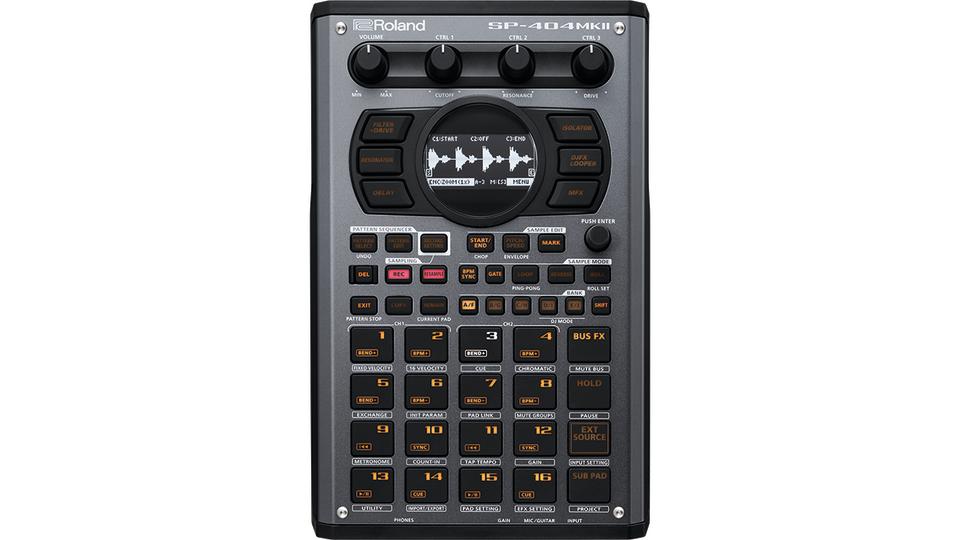
? Roland SP-404 MkII
A more advanced and generally ‘pro feeling’ sampler at a price not a massive amount more than the K.O.II, although it’s arguably lacking the fun factor.
? Teenage Engineering Pocket Operator for Pixel
Users of Google’s Pixel phones can do many of the same things as the K.O.II from this free app, albeit in a more fiddly format.
While the slightly quirky design means it can take a little while to get your head around the workflow, once you’ve grasped the basics, the process of assigning samples to pads and creating a loop by either live recording or step sequencing is pleasingly quick and easy.
One of the highlights is how rapid it is to sample into the K.O. II. Simply press the Sample button and hold a target key, and the K.O. will capture audio from either the inbuilt mic or audio input. The sample mode has a few options, including a threshold that can be used to trigger the start of the recording, recording gain, and an option to dictate whether the audio input records in stereo, mono or just the left or right channel. It’s a fairly simple setup but the general ease makes it a joy to capture found sounds through the mic or snatches of synth, records or YouTube videos from a phone, then quickly throw these into a beat.
The K.O. II is 12-voice polyphonic, which can be used to allow for 12 mono sounds or six stereo ones to play at a time, although the sequencer allows for a total of four Groups of 12 Sounds to be assigned and sequenced for any project. A Keys mode allows for melodic sounds to be played and sequenced using the button grid, which can make use of preset scales, although attaching a controller to the MIDI input makes playing melodic sounds a lot easier.
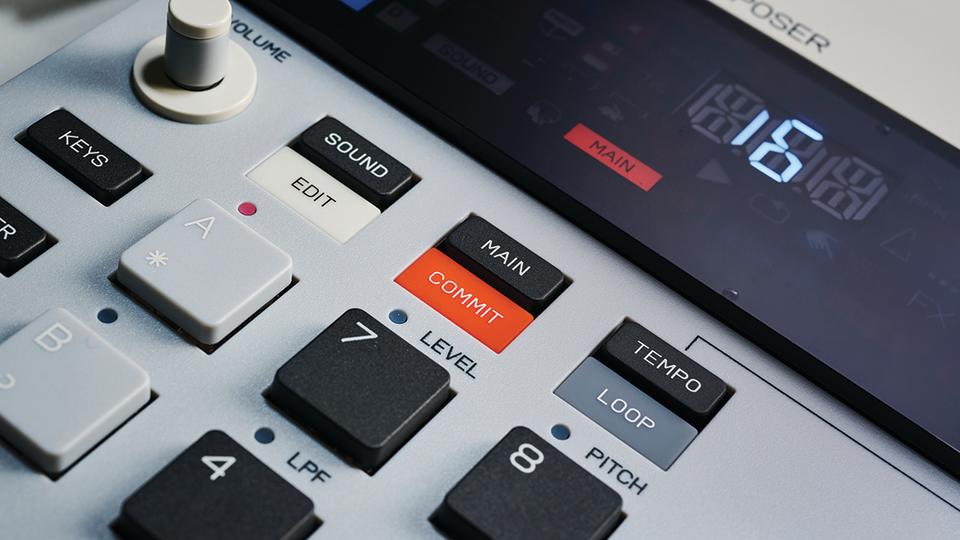
Sample storage and transfer
The K.O. II can be loaded with up to 999 samples, although the fairly major caveat to this is that the internal memory is only 64MB, so you’re likely to run out of space long before you fill all of those sample slots, particularly once you start adding loops and long audio clips.
It’s a bit of a shame that there’s no way to extend that internal memory to really take advantage of the potential of the portability. A small SD card slot, for example, that would allow the user to swap sounds in and out of the internal memory, could really broaden the appeal for those taking the device on the road, particularly if you’re likely to want to sample regularly while you’re away from the studio. What does offset this slightly, however, is Teenage Engineering’s slick and easy-to-use, browser-based transfer tool, which makes it very easy to drag and drop samples onto the K.O.II from a computer. The sample tool also allows users to download sounds from the device to store on their desktop – which is handy for backing up your samples.
The unit itself ships with a bank of several hundred, good quality factory sounds, providing plenty to get stuck into.

Fade away
Samples can be triggered by means of three playback modes: one-shot, key (ie polyphonic) and legato. The K.O. II also has a rudimentary time-stretching mode that will stretch a sample over one or two bars of your loop, or stretch it based on an assigned BPM. This can introduce some fun sonic results when pushed to extremes. There’s also simplistic sample chopping, which allows the user to slice a sample – either automatically or manually – across the 12 sample slots of a group.
These tools are all great, but the K.O. II can feel a little limited when it comes to editing samples beyond this. Each sound can have start and end points trimmed, a basic A/D envelope applied and have its level and pitch edited, although sadly there’s no way to automate these parameters for individual sounds.
You can, however, automate a host of parameters using the fader on a per-group basis. By default, the fader controls a group’s level, but it can also adjust things like group pitch, pan position, attack and release for all sounds, apply low- and high-pass filters, timestretch all sounds in a group at once and apply modulation effects across the group. Making use of these tools is key to unlocking the K.O. II’s unique character, and with all these functions combined it’s possible to turn simplistic samples into something altogether weirder and more creative.
Beyond these group parameters the K.O. II has a few other effect options. The first is a global send effect slot – although in reality this works more like an insert effect, as with the send set to 100% you’ll only hear the wet signal – which is shared by all groups. This can make use of one of six effect types: reverb, delay, distortion, filter, compression and chorus. These are all relatively basic in their application, but sound good nonetheless. Beyond this, the K.O. also has a master compressor with Drive and Speed parameters, which can sound nicely aggressive when cranked up.
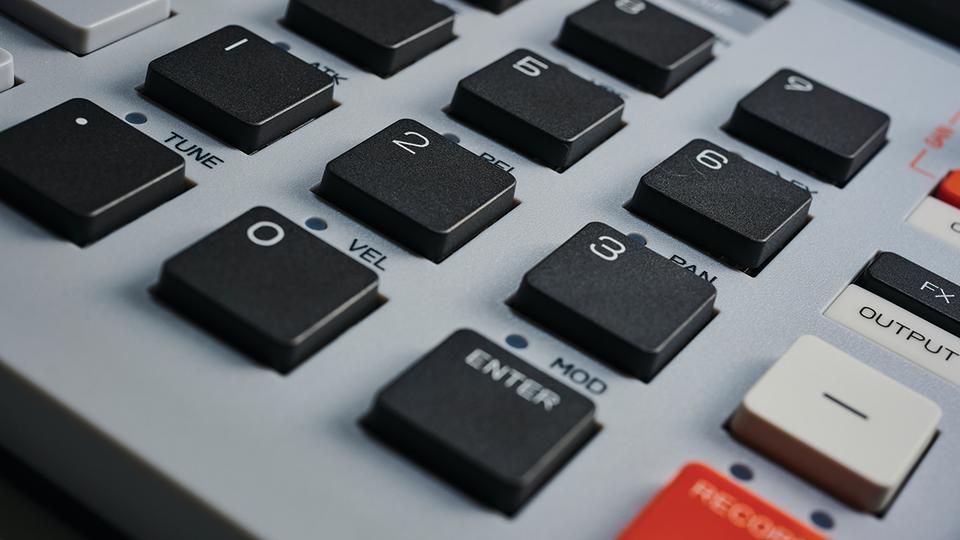
The final elements are the ‘punch-in’ effects, which were a defining feature of the PO range. These are master effects designed to apply quick, drastic transformations to the audio. Controlled by holding down one of the 12 keyboard buttons, these do things like engage quick loops, extreme filter sweeps or apply overt modulations to the sound. They’re labelled ‘Punch-In 2.0 Effects’ here, denoting that these are a fresh batch of processors and also that they now respond to pressure – which is a nice touch. It feels like a bit of a missed opportunity that TE hasn’t enhanced these further though. As with the PO range, the punch-in effects are always fun, but it’s disappointing there’s no option to record or sequence them into loops, or trigger them with external MIDI.
The K.O. II has some other neat tricks up its sleeve. A significant one is the ability to sequence external gear by sending MIDI from its pads. There’s also a handy BPM detection tool, which can help establish the BPM of audio coming through the device’s input. Speaking of which, that input can also be used to process external audio through the onboard effects.
Bigger and better
Despite the weaknesses we’ve mentioned above, we're quite a fan of the K.O.II. It seems to have been the subject of some derision online since it was first launched. Setting aside any discussion of build quality – again, this isn’t something we’ve experienced issues with – most criticism seems to focus on a slightly reductive discussion of its limitations and features deemed to be missing.
As a fun, esoteric tool for capturing, sequencing and mangling, it has a lot to offer
There’s certainly a case to be made that the K.O. II is far from the deepest or most extensively featured sampler on the market. It’s missing features that would allow it to create full tracks – there is a slightly half-hearted ‘Commit’ tool aimed at creating scenes, but it lacks a proper song mode. It’s also a major shame there’s no way to output or export audio beyond the single 3.5mm jack output. If you’re looking for a workhorse device to build a live set or studio workflow around, the likes of Roland’s SP-404 or even an MPC One are far better options, albeit at a slight price jump above the K.O.II.
However, taken as a fun, slightly esoteric tool for capturing, sequencing and mangling sampled patterns, the K.O. II has a lot to offer within its specific remit. Given the price – which is surprisingly reasonable for Teenage Engineering – we think that’s fine.
Put simply, it’s a basically a Pocket Operator, but a bit bigger and a bit better.
MusicRadar verdict: The K.O. II is far from the most powerful sampler on the market, but there’s a lot of creative fun to be had within its limitations.
Teenage Engineering EP-133 K.O. II: Hands-on demos
True Cuckoo
B&H Photo Video Pro Audio
The Midlife Synthesist
Mattias Holmgren
Teenage Engineering EP-133 K.O. II: Specifications
KEY FEATURES: Built-in mic and speaker; 6 stereo voices and 12 mono; 64 MB memory, or 999 sample slots; 6 built-in master effects and 12 punch-in effects; Pressure sensitive keys and multifunctional fader.
I/O: 1x stereo in/out, sync in/out, MIDI in/out and USB-C.
DIMENSIONS: 240 x 176 x 16mm.
WEIGHT: 0.62kg.
CONTACT: Teenage Engineering
